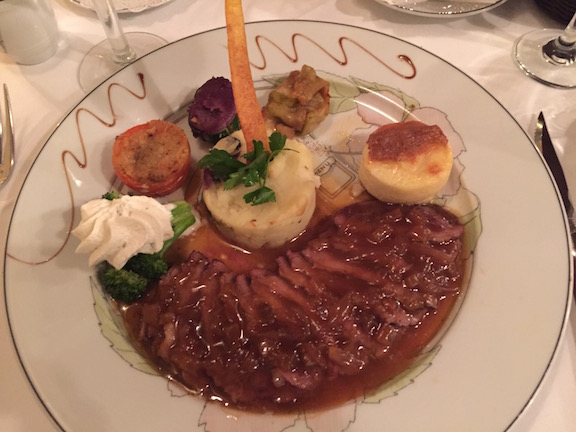By Alexander Britell
What is the culinary capital of the Caribbean?
Where is the Mecca of Caribbean food, the singular place that draws foodies and gourmands and adventurers?
Where is the epicentre of great Caribbean chefs and great cooking?
There are so many contenders.
There is great food in Anguilla. Any time of day you will find a serious meal prepared seriously, whether at a barbecue stand or De Cuisine.
There are great meals, too, in San Juan, where more and more chefs are opening bold restaurants like Yantar and Jose Enrique.
And in Martinique you will find food you won’t see anywhere else, with world class produce and rum and French attention to detail; the foie gras and banana dish at La Cave a Vins is one of the great tastes in the hemisphere.
In Jamaica there is, of course, jerk, that great West Indian seasoning and style and method, a flavor worth a voyage on its own.
And Trinidad and Tobago, of course, that wonderful amalgam of Asian, West Indian and European cuisines, home to Port of Spain, the region’s great street food destination.
But the Caribbean’s culinary capital is not in any of these places.
It is on a humble, narrow boulevard, a small town on the beach where the walls are covered in years of salt water and cars fight people for space.
Above: accras de morue at Le Ti Coin Creole
But there are more great restaurants here in one place than in any other area of the Caribbean.
Grand Case. St Martin’s soul, the French Caribbean town with an unmatched chef on every block.
Above: the lolos in Grand Case
Le Soleil; Le Pressoir; Le Tastevin; Spiga; the Creole food stalls of Lolo; Auberge Gourmand; Ti Coin Creole. There are more than can be counted.
Above: Le Pressoir
Classic magrets de canard; rare lobsters; marlin steaks and root vegetable stews and pistachio mousses and curry goat… the great delicacies of the Caribbean side by side with their French counterparts, served elegantly and artfully.
Above: Chef Carl Phillips of Le Ti Coin Creole
Local chefs and international culinary artists converge here.
Above: duck at Auberge Gourmande
Most of the eateries are French-Caribbean, others are classic Creole. Some are Italian. Some are everything. Some are simple barbecue joints.
The meals are usually, if not always, followed by gratis, house-made infused punchs, rum-based sweet drinks that will significantly extend the length of your meals.
Above: Grand Case, from above
The service is warm and it is French- the great paradox whose tension helps warm the stoves.
If you are planning a Caribbean trip to eat, or a foodie vacation anywhere in the hemisphere, you need to stop here.
Above: pistachio mousse at Le Tastevin
Because there are so many great flavors and culinary energies in the Caribbean- the aforementioned jerk, the heartiness of Virgin Island fungi, the force of Haitian griot, the tang of smoked marlin from Guadeloupe.
Above: foie gras in Grand Case
But here flavors are formed into something more- great paint turns into great artwork.
This is a great food gallery.
And it is all in one walkable boulevard.
It may seem like a humble thoroughfare in an old Creole village, with walls that need an extra touch.
But it is so much more.
This delicious street, this town of legendary food, is the Caribbean’s culinary capital.
















